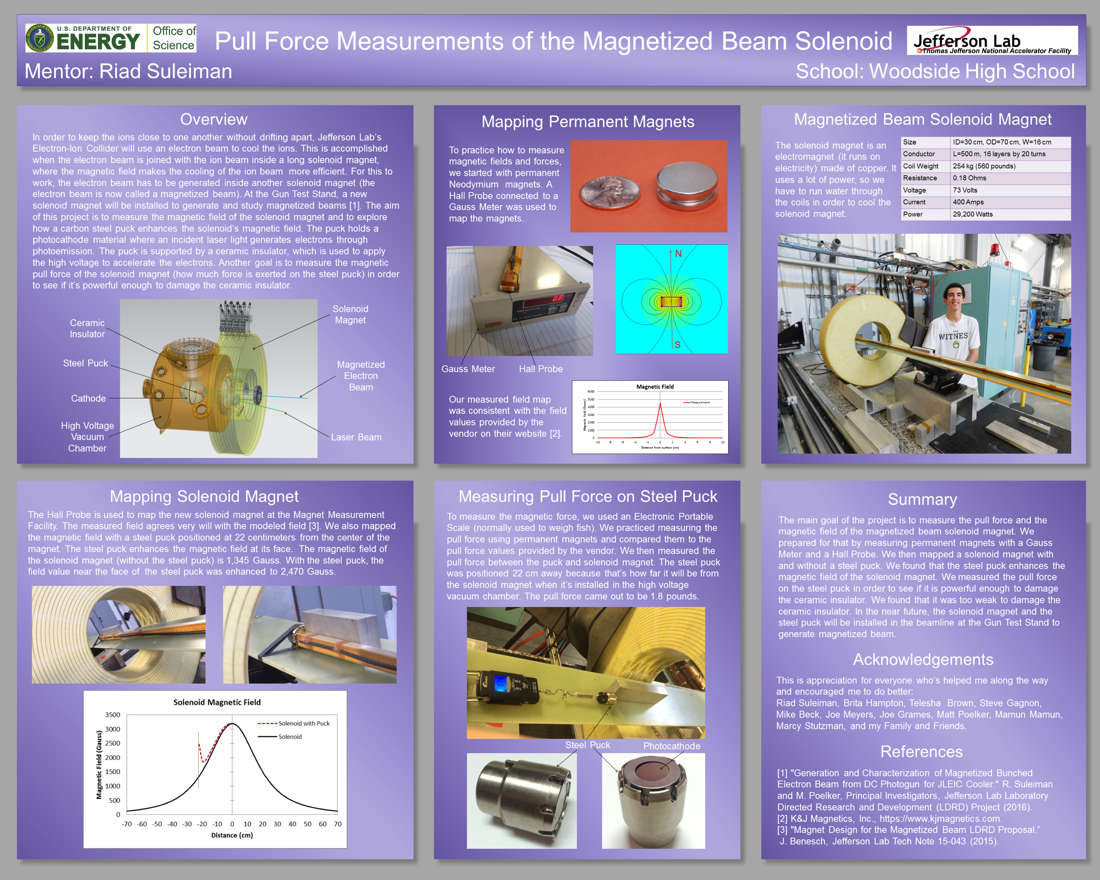High School Research at Jefferson Lab
Measuring Magnetic Field and Forces of Solenoid Magnet
My project is about magnetic fields. I am measuring magnetic fields using the Gauss Meter. The Gauss Meter is an accurate way of measuring the magnetic field of the (Neodymium) magnets. After we finished measuring with the Gauss Meter, I used a formula (Bx=Br/2((t+x)/(??2+?+?2) – x/(?2+?2))). The formula is a quick way of finding the magnetic field of the magnets. We have then used a scale in order to find the pull force of the magnets. There are three different ways to find the pull force of a magnet: 1) pull the magnet away from a magnetic material (example: steel plate) and measure the pull force with a scale; 2) put the magnet in between two steel plates and pull off the top plate and measure the pull force with a scale; 3) pull the magnet away from another magnet (the same exact magnet) and measure the pull force with a scale. On the website (where we got our magnets), it gives all three pull forces of each magnet, so I used that as a way to double check the numbers I get from the scale. I am doing all of this because we are going to be using these methods to measure the magnetic field of the Solenoid magnet that they will install in the GTS (Gun Test Stand). In the GTS, there is an electron beam, and we used one of the Neodymium magnets in order to find different temporary magnets (materials that only become magnetic when in the presence of another magnet) that are a part of the electron beamline. We are finding temporary magnets because we need to find any unstable metals that could fly off towards the Solenoid (example: loose screws) and other safety precautions. Also these temporary magnets will affect the magnetic field of the Solenoid magnet. Hopefully, the Solenoid beam will meet their standards so they can install it right away.

Citation and linking information
For questions about this page, please contact Education Web Administrator.
